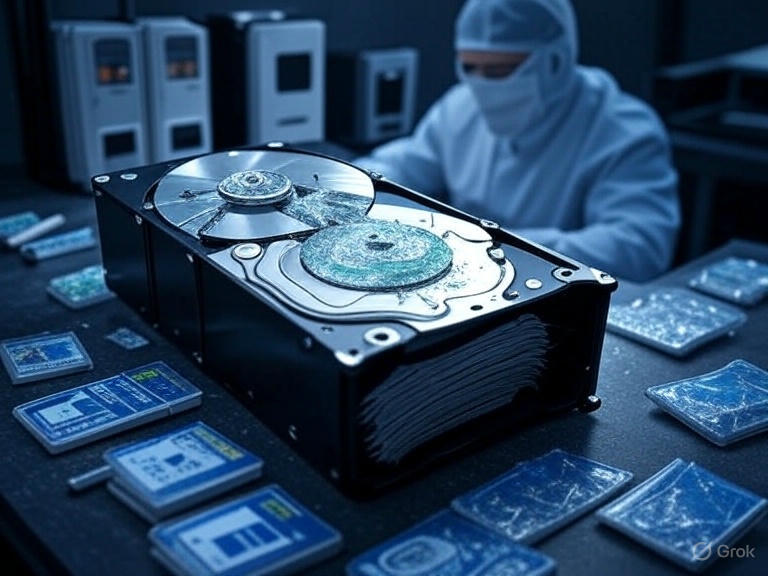How to Recover Data from a Crashed Hard Drive
A crashed hard drive can feel like a nightmare, especially if it contains critical files like family photos, work documents, or irreplaceable memories. The good news? Data recovery is often possible with the right approach. This article provides a comprehensive, SEO-friendly guide on how to recover data from a crashed hard drive, including DIY methods, professional services, and preventive measures to avoid future data loss. Let’s dive in!
What Causes a Hard Drive to Crash?
A hard drive crash occurs when the drive becomes inaccessible due to physical damage, logical errors, or mechanical failure. Common causes include:
- Physical Damage: Dropping the drive, power surges, or water exposure.
- Logical Failure: Corrupted file systems, malware, or accidental deletion.
- Mechanical Failure: Worn-out components like read/write heads or platters.
- Overheating: Excessive heat causing hardware malfunction.
Understanding the cause is crucial, as it determines the best recovery approach.
Caption: A crashed hard drive can result from physical or logical failures, but recovery is often possible.
Step-by-Step Guide to Recover Data from a Crashed Hard Drive
Step 1: Assess the Situation
Before attempting recovery, determine the type of failure:
- Symptoms of Physical Failure: Clicking, grinding noises, or the drive not spinning.
- Symptoms of Logical Failure: Error messages, inaccessible files, or missing partitions.
If you hear unusual noises, stop using the drive immediately to avoid further damage. For logical failures, proceed with caution.
Step 2: Stop Using the Hard Drive
Continuing to use a crashed hard drive can overwrite data, making recovery harder or impossible. Disconnect the drive and avoid writing new data to it.
Step 3: Try Basic Troubleshooting
Sometimes, the issue isn’t a full crash. Try these quick fixes:
- Check Connections: Ensure cables are secure and try different USB ports or cables.
- Test on Another Computer: Connect the drive to another system to see if it’s recognized.
- Use a Different Power Source: Power surges can cause temporary issues.
If the drive still isn’t accessible, move to recovery methods.
Step 4: Use Data Recovery Software (For Logical Failures)
For logical failures (e.g., corrupted files or deleted partitions), data recovery software can help. Popular tools include:
- Recuva: Free, user-friendly, great for recovering deleted files.
- EaseUS Data Recovery Wizard: Recovers files from formatted or corrupted drives.
- Disk Drill: Supports multiple file systems and deep scans.
How to Use Recovery Software:
- Install the software on a different drive to avoid overwriting data.
- Connect the crashed hard drive as an external drive.
- Run a scan to locate recoverable files.
- Save recovered files to a separate, healthy drive.
Note: Software won’t work for physical or severe mechanical failures.
Step 5: Create a Disk Image
If the drive is partially accessible but unstable, create a disk image to work with a copy of the data:
- Use tools like DDrescue or Clonezilla to clone the drive.
- Work with the disk image to avoid further damage to the original drive.
Step 6: Seek Professional Data Recovery Services
For physical or mechanical failures, professional help is often necessary. Data recovery experts use cleanroom environments and specialized tools to repair drives and extract data. Look for reputable services with:
- No-data, no-fee policies.
- Cleanroom certifications (e.g., ISO 5 Class 100).
- Transparent pricing.
Cost: Professional recovery can range from $300 to $2,000, depending on the damage and data size.
Step 7: Replace the Hard Drive
If the drive is beyond repair, replace it after recovering your data. Transfer recovered files to a new drive and dispose of the old one securely.
Preventing Future Hard Drive Crashes
Prevention is better than recovery. Here’s how to protect your data:
- Regular Backups: Use cloud services (e.g., Google Drive, Dropbox) or external drives for automatic backups.
- Use Surge Protectors: Prevent power surge damage.
- Monitor Drive Health: Tools like CrystalDiskInfo can warn you of potential failures.
- Avoid Physical Shocks: Handle drives carefully to prevent drops.
- Keep Drives Cool: Ensure proper ventilation to avoid overheating.
Common Mistakes to Avoid
- Ignoring Warning Signs: Slow performance or strange noises indicate issues.
- Overwriting Data: Avoid saving new files to a crashed drive.
- Using Unverified Software: Stick to reputable recovery tools to avoid malware.
- Attempting DIY Repairs on Physical Damage: Opening a drive without expertise can worsen the damage.
When to Give Up on Recovery
In rare cases, data recovery may not be possible, such as:
- Severe physical damage (e.g., shattered platters).
- Overwritten data due to continued use.
- Encrypted drives without the key.
If recovery fails, focus on restoring from backups or recreating lost data.
FAQs About Hard Drive Data Recovery
Q: Can I recover data from a hard drive that won’t spin?
A: If the drive doesn’t spin, it likely has mechanical failure. Professional recovery services are your best option.
Q: How long does data recovery take?
A: DIY recovery can take hours, while professional services may take days or weeks, depending on the damage.
Q: Is it safe to use free recovery software?
A: Reputable free tools like Recuva are safe, but avoid unverified downloads to prevent malware.
Q: Can I recover data from an encrypted hard drive?
A: Yes, but you’ll need the encryption key. Without it, recovery is nearly impossible.
Conclusion
Recovering data from a crashed hard drive is often achievable with the right tools and techniques. For logical failures, software like Recuva or EaseUS can work wonders. For physical damage, professional services are the safest bet. To avoid future heartbreak, prioritize regular backups and drive maintenance. By following this guide, you can maximize your chances of retrieving precious files and prevent data loss in the future.






